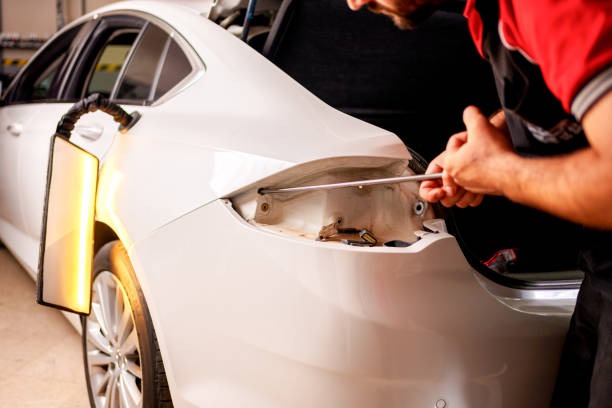
Top Emergency Dental Services: What to Do When You Need Immediate Care
We’ve all been there: enjoying a relaxing weekend or perhaps indulging in a delicious meal when suddenly, a toothache strikes. Dental emergencies can catch us off guard, leaving us scrambling for solutions. So, how do you tackle these unforeseen challenges effectively? Don’t worry; we’ve got you covered. In this article, we’ll explore top tips on handling emergency dental situations while keeping things straightforward and engaging. Recognizing a Dental Emergency First off, it’s crucial to understand what constitutes a dental emergency. Not every minor discomfort requires urgent attention, but certain situations do. Knowing the difference can save you a lot of stress and time. Common Dental Emergencies Severe toothache or swelling Chipped, cracked, or broken teeth Knocked-out tooth Lost filling or crown Abscess or oral infection If you’re experiencing any of these issues, it might be time to seek immediate care. But don’t fret; you can immediately take steps to alleviate discomfort while waiting to see a dentist. Immediate Steps to Take When Dental Emergencies Occur While panicking during a dental emergency might be tempting, keeping a cool head can make a difference. Let’s explore some actions you can take right away: Rinse your mouth gently with warm water. If there’s bleeding, use gauze and apply gentle pressure. Apply a cold compress to the outside of your mouth or cheek for swelling. For severe tooth pain, you may take an over-the-counter pain reliever. Refrain from using aspirin directly on the affected area as it may cause tissue burns. These steps won’t replace professional dental care, but they can help manage pain and discomfort until you see a dentist. Finding an Emergency Dentist Amid a dental crisis, you might wonder how to find the right professional to address the issue. Here’s a simple guide to help you with your search: Where to Look Contact your regular dentist. They may have after-hours services or can refer you to someone who does. Check online directories and reviews to locate emergency dental services near you. Ask friends or family for recommendations. Look for clinics or dental hospitals that clearly state they offer emergency services. Having a plan in place can save you precious time and promptly get you the care you need. Handling Specific Dental Emergencies Providing effective dental care during emergencies requires understanding various situations and adopting different approaches to offer prompt and practical solutions for residents needing immediate assistance. Let’s examine some specific situations and how to handle them effectively. Severe Toothache A severe toothache can be incredibly uncomfortable. To prevent further irritation, start by gently flossing around the tooth to ensure no food particles are trapped, then rinse with warm water. Avoid placing aspirin directly on the gum. Chipped or Broken Teeth If you experience a chipped or broken tooth, save any fragments and rinse your mouth with warm water. Use a cold compress to reduce swelling and pain, and contact an emergency dentist as soon as possible. Knocked-Out Tooth Time is critical with a knocked-out tooth. Handle the tooth by the crown (not the root), rinse gently to remove dirt, and try to place it back in the socket if possible. If not, keep the tooth moist in milk or a specialized tooth preservation product while seeking immediate dental care. The Role of Pain Relief in Dental Emergencies When dealing with dental pain, over-the-counter pain medications can be a helpful ally. However, understanding how to use them effectively is key. Using Over-the-Counter Pain Relief Avoid applying pain relievers directly to gums as it may cause burns or irritation. Take the medication based on package instructions. Consult with a healthcare provider if you need clarification on dosage or suitability. Remember, pain relief medication is a temporary measure and should not replace dental treatment. How to Avoid Dental Emergencies Prevention is often the best approach to managing dental emergencies. Incorporating a few habits into your daily routine can significantly reduce your risk. Effective Dental Hygiene Practices Brush your teeth at least twice a day using fluoride toothpaste. Floss daily to remove plaque and food particles. Limit sugary foods and drinks. Visit your dentist regularly for check-ups and cleanings. Consider wearing a mouthguard during sports or if you grind your teeth at night. These straightforward steps can go a long way in keeping your teeth and gums healthy. Consistent San Jose dental care, which includes regular check-ups and cleanings, is essential in maintaining good oral hygiene and preventing potential issues. Understanding the Cost and Insurance Aspects Dental emergencies can be unexpected and costly. Understanding how your insurance works or what additional options you may have can help ease potential financial stress. Insurance and Payment Options Review your dental insurance policy to understand emergency coverage. Inquire about payment plans or discount programs offered by your dentist. Research dental clinics that offer sliding scale fees based on income. A financial preparation plan can help you focus on your dental health without the accompanying anxiety over costs. When to Consult a Specialist Sometimes, a regular dentist might refer you to a specialist to address more complex issues. Understanding when this step is necessary is essential for comprehensive care. Types of Dental Specialists An Endodontist for root canal issues An Oral Surgeon for surgical procedures or complex extractions Periodontists for gum-related issues Prosthodontists for missing dental work such as bridges and dentures If your dentist recommends a specialist, it’s a sign that you may need more focused care for your situation. Maintaining Oral Health After an Emergency How can you ensure long-term oral health after a dental emergency? A proactive approach can be efficient. Post-Emergency Dental Care Tips Follow all post-treatment instructions provided by your dentist. Continue with a regular oral hygiene routine. Schedule follow-up appointments to monitor your dental health. Stay informed about changes in your oral health and seek immediate care if needed. Being vigilant about aftercare can prevent future issues and maintain your dental health. Explore the Emergency Dental Services If you’re searching for top emergency dental services, you’re not alone. Many people unexpectedly need urgent dental care, and knowing where to look is a lifeline. Factors to Consider Dental clinic availability and operating hours Professional certifications and dentist experience The range of services offered Location and ease of access Armed with this knowledge, you’ll be better prepared to address any dental emergencies that may arise. Understanding Oral Surgery and Its Importance In some instances, emergencies might require oral surgery for proper treatment. Whether it’s a wisdom tooth extraction or repairing a jaw injury, knowing when such procedures are necessary is essential. If you’re interested in the intricacies of these procedures or have a pending surgery, you can click here for further information about oral surgery. The more you understand, the better you can manage your expectations and ensure you make informed decisions about your dental health. Final Thoughts Dental emergencies can be unsettling, but having the information at your fingertips can make a difference. Incorporate preventive measures into your daily life, understand the dynamics of emergency care, and don’t hesitate to seek professional help when needed. With these guidelines, you’ll be better equipped to handle whatever dental challenges may come your way.
In What Ways Can Laser Dentistry Improve the Patient Experience?
Welcome, curious reader. Today, we’re diving into the fascinating world of dentistry that’s set to transform your dental journey. Gone are the days of dreaded dentist visits; say hello to a new era of minimally invasive and efficient dental care—thanks to lasers. What is Laser Dentistry? You might be wondering what laser dentistry really is. At its core, laser dentistry uses a focused beam of light to carry out various dental procedures, often replacing the need for traditional drills or other standard tools. This technology provides a high degree of precision, making dental care more effective and comfortable. No More Fear of Drills Let’s face it, nobody loves the sound of a dental drill. Fortunately, laser dentistry significantly reduces or even eliminates the need for these noisy, anxiety-inducing tools. Patients find this aspect particularly appealing since it can alleviate dental fear and phobia, ultimately making visits to the dentist a more pleasant experience. The Comfort of Reduced Pain Lasers make incisions without causing trauma to surrounding tissues. Often leads to less pain compared to traditional methods. Reduced need for anesthesia, which means quicker visits. Faster Healing and Recovery Time One standout benefit of laser technology is the expedited healing process. Lasers aid in minimizing tissue damage, allowing your body to recover in a much shorter time than with conventional methods. In fact, the use of lasers can also reduce the amount of bleeding during and after a procedure. High Precision for Better Results The precision of laser technology allows dentists to focus solely on targeted areas, minimizing effects on surrounding tissues. This not only protects healthy areas of your mouth but also leads to more accurate and effective treatments. Those looking for cosmetic and family dental care by Alman & Katz will find laser technology particularly beneficial for its precision. Advanced Applications in Dentistry Lasers aren’t just for giving you pain-free fillings. They have a diverse range of applications in dental treatments. Ranging from teeth whitening to removing lesions, the versatility of laser dentistry is never-ending. It’s like having an all-in-one tool in your dental tool kit. Gentle Procedures for the Gums For those dealing with gum disease or seeking cosmetic adjustments, laser dentistry can provide gentle and precise procedures. Instead of invasive surgery, lasers can promote quicker recovery and less discomfort for gum recontouring and periodontal treatments. A New Approach to Cavity Treatment One of the most common fears in dentistry is getting a cavity filled. Lasers offer a promising solution. Unlike traditional methods that require drilling, lasers can precisely target decayed material without the noise and discomfort of drills. For those seeking laser dentistry in Boca Raton, this technology can make routine cavity fillings much more pleasant. Helping with Dental Phobia The gentle nature of laser procedures makes dental visits less intimidating. Potentially eliminates the need for anesthesia. Promises less post-procedure discomfort. Even Whitening Gets a Boost If you want a dazzling smile, you don’t have to rely solely on traditional whitening methods. Lasers can enhance the whitening process, offering rapid results with minimal sensitivity. You’ll shine bright like a diamond before you know it. Lip and Tongue Tie Treatments Laser treatments have also become a game-changer for addressing lip and tongue tie issues, especially in younger patients. The laser can release these ties without the need for stitches, making the process smoother and aiding in faster healing. The Efficiency of Laser-Assisted Root Canals Root canals, often dreaded, can be a less daunting experience when lasers are involved. Lasers can help clean and shape the canals more efficiently, ensuring thorough disinfection. By simplifying the process, your time in the chair can be significantly reduced. Enhanced Dental Crown Services Lasers offer enhanced procedures for crowns. Whether you need a crown due to decay or as part of a restoration process, laser technology can prep the tooth with minimal discomfort. You’ll be pleased to find that dental crown services have become more precise with the integration of laser technology. How Laser Dentistry Benefits Dental Care Providers It’s not just patients who reap the rewards of laser technology; dental care providers benefit as well. The precision and efficiency of lasers streamline procedures, allowing dental professionals to manage patient care more effectively. This means shorter appointment times and the ability to see more patients without compromising on quality. A Tool to Spark Innovation The introduction of laser technology in dentistry encourages the continued innovation of procedures and techniques. As more dentists incorporate lasers into their practice, it fosters an environment of progressive care that continuously seeks to improve patient experiences. Potential Cost Savings in Laser Dentistry Fewer anesthetics may be needed. Less medication is required post-procedure. More efficient treatments could lead to long-term cost savings for patients. Is Laser Dentistry Right for You? So, is laser dentistry your cup of tea? While it offers numerous benefits, it’s essential to consult with a dental care provider who uses laser technology to determine if it’s suitable for your specific needs. Whether you’re in need of cosmetic enhancement or tackling a dental condition, the diverse applications make it a viable option to consider. How to Find a Qualified Laser Dentist If you’re curious and want to experience the benefits of laser dentistry, it’s crucial to find a qualified provider. Look for dental professionals with specialized training in laser technology who can walk you through what to expect in the treatment process. What to Discuss During Your Consultation During your initial consultation, don’t hesitate to ask questions. Inquire about the types of procedures they offer, the technology they use, and the experiences of other patients. You’ll gain valuable insight into whether this method aligns with what you’re seeking in dental care. Future of Dental Care with Lasers The future looks bright, doesn’t it? Laser dentistry isn’t just a trend; it marks a significant advancement in dental care that benefits both patients and practitioners. As technology continues to evolve, lasers will likely become the norm, ushering in a new era of patient-centric dentistry. Final Thoughts There you have it—a glimpse into how laser dentistry can drastically improve your dental experience. With its ability to ease discomfort, offer precision, and speed up recovery times, it’s no wonder this technology is here to stay. So next time you schedule a dental appointment, consider the wonders of what laser technology might add to your visit.
How to Choose the Right Fitness Studio for Your Needs and Goals
Given the various options available, choosing the right fitness studio can be very challenging. However, understanding your specific fitness needs makes the process significantly easier and much more enjoyable. What are your fitness goals? Are you looking to lose weight, build muscle, improve cardiovascular health, or simply maintain your current fitness level? Having clear goals will help you narrow down your choices and find a studio that offers the right programs and facilities to help you succeed. 1. Assess Your Current Fitness Level Before you dive into a new fitness routine, it’s essential to assess your current standing. Take a moment to evaluate your physical abilities and any limitations. Are you a beginner or an experienced athlete? Knowing your starting point is crucial for finding a studio that can cater to your level and offer appropriate classes and equipment. 2. Define Your Preferences When considering various fitness studios, think about what kind of environment you thrive in. Do you enjoy a high-energy atmosphere or prefer a more relaxed, self-paced workout space? Consider whether you like group classes or prefer working out on your own. Your preferences can significantly influence which fitness studio will feel like the perfect fit for you. 3. Research Different Studio Types Fitness studios come in all shapes and sizes, each focusing on different methods and approaches. Here’s a breakdown of some popular types: Yoga Studios: Ideal for improving flexibility, strength, and stress relief. CrossFit Gyms: Perfect for those who love high-intensity, functional movement workouts. Spin Studios: Best for cardiovascular health and high-energy, music-driven classes. Pilates Studios: Excellent for core strength, flexibility, and posture improvement. Martial Arts Centers: Great for learning self-defense, discipline, and improving fitness levels. 4. Explore Specialized Options When exploring specialized fitness studios in Florida, you’ll find a wide range of options that cater to various interests, from dance and barre to high-intensity interval training (HIIT). While on your fitness journey in Florida, you might also come across other wellness services that interest you, such as skincare treatments. For instance, you may learn about popular spots for botox in Orlando, FL, which can complement your health and beauty regimen. 5. Location and Convenience Matter A fitness studio’s location is undeniably a crucial factor to consider. Ideally, it should be easily accessible either from your home or workplace. The convenience of short travel times can motivate you to maintain regular attendance without the hassle. Moreover, studios located within a friendly, vibrant community can add to your overall experience and goal attainment. Check Operational Hours Another aspect of convenience is the studio’s hours of operation. Ensure the class schedules and open hours align well with your lifestyle and availability. Whether you’re an early bird or a night owl, the right studio will have options that suit you. 6. Evaluate the Facility’s Offerings Once you’ve focused on a few studios, it’s time to delve deeper into what they offer. A comprehensive evaluation includes: Equipment Availability: Modern and well-maintained equipment can enhance your workout experience. Class Varieties: Diverse class offerings mean you’ll stay engaged and can try different forms of exercise. Additional Amenities: Features such as locker rooms, showers, saunas, or even a medical spa at Apex Fit can elevate your fitness journey. These extras can provide relaxation and rejuvenation after a tough workout. 7. Research Trainers’ Qualifications The expertise of fitness trainers can significantly affect your experience and progress. Look for studios where instructors have reputable certifications and sufficient experience in their specialized fields. Consider checking reviews or testimonials from current or past clients to get a sense of their teaching style and effectiveness. Assess Trainer-Client Interaction A great trainer-client relationship is built on effective communication and personalized attention. Observe or inquire about how trainers interact with their clients during classes. Are they approachable, attentive, and accommodating to different fitness levels? 8. Consider Pricing and Membership Options Your budget plays an important part in choosing a fitness studio, and it’s essential to weigh the costs against the value offered. Compare pricing structures across different studios, including monthly memberships, pay-as-you-go classes, and any additional fees. Evaluate the Value for Money While it might be tempting to choose the lowest price option, consider what is included in the price. Sometimes, paying a little extra can provide access to better facilities, skilled trainers, and a wide range of classes, making it a worthwhile investment for your health. 9. Trial Classes Can Make a Difference Before committing, take advantage of trial classes or guest passes offered by many fitness studios. These trials give you a firsthand experience of the environment, trainers, and fellow attendees. Pay attention to how you feel during and after the session. Is it motivating? Does it align with your goals? Seek Feedback from Current Members If possible, talk to current members about their experiences. They can provide valuable insights into the studio’s operations, community, and any potential drawbacks that aren’t immediately visible during a trial class. Such firsthand accounts can significantly influence your decision. 10. Check Online Reviews and Ratings In today’s digital age, online reviews are invaluable. Look up the studio on platforms where users share their experiences and rate their satisfaction levels. These reviews can offer clues about issues like cleanliness, overcrowding, or the effectiveness of the Orlando fitness training programs offered. Don’t Rely Solely on Ratings While online reviews are helpful, remember that experiences can be subjective. Use them as a guide but also trust your instincts and personal experience when making a final decision. Final Considerations for Making Your Decision After researching and visiting potential fitness studios, take time to reflect on all the information gathered. Each person’s fitness journey is unique, so there is no one-size-fits-all answer. Consider what aspects are non-negotiable and which ones you are flexible with. Trust Your Gut: Your intuition is a powerful tool; if a studio feels right for you, it often is. Write Pros and Cons: Listing out pros and cons can help you visualize and weigh your options effectively. Think Long-Term: Consider if the studio can accommodate growth or changes in your fitness goals over time. Wrapping It Up Choosing the right fitness studio requires some research, reflection, and sometimes trial and error. By understanding your needs, evaluating potential studios, checking facilities and trainers, and aligning everything with your lifestyle and budget, you’ll set a solid foundation for a rewarding fitness journey. Remember, the right place should not only challenge you but also support and inspire you to achieve your health goals.
Personalized Insurance Advice: How Brokers Can Tailor Plans to Your Needs
In a world where one size rarely fits all, personalized insurance can make a significant difference. Whether you are an individual looking for health coverage or a business seeking the perfect employee benefits package, insurance brokers offer tailored solutions. Their expertise in understanding diverse needs and crafting customized plans plays a crucial role in safeguarding your future, assets, and health. What Makes Personalized Insurance Special Gone are the days when generic insurance policies were the only option. Personalized insurance acknowledges the unique aspects of each client’s situation. By working closely with a broker, you get a coverage plan that caters to your specific needs and priorities. The Importance of Customized Plans Personalized insurance takes into account factors such as age, health, lifestyle, and financial status. This focus ensures that your coverage is both relevant and adequate. It’s about finding the right balance between comprehensive protection and cost-effectiveness, providing peace of mind that your insurance isn’t just a piece of paper but a safety net. How Brokers Enhance Personalization Insurance brokers are professionals who bridge the gap between insurance providers and clients. Their role is to understand their client’s unique circumstances and tailor insurance solutions that best meet those needs. Understanding Client Needs Brokers invest time in getting to know their clients through detailed consultations. This process involves discussing life circumstances, long-term goals, and financial capabilities. Such an approach ensures that the insurance plan isn’t just adequate but optimal. Leveraging Expertise With an in-depth understanding of various insurance products, brokers can navigate the complexities of insurance policies. This expertise allows them to tailor plans that are not only cost-effective but also comprehensive in coverage. Exploring the World of Health Insurance Health insurance is a vital component of financial planning. With the rising cost of healthcare, having the right health insurance is crucial. Brokers simplify this process by offering tailored health plans that suit individual or family needs. Choosing the Right Coverage Assess the health needs of yourself and your family. Consider current health status and potential future needs. Ensure the plan covers essential health services. Choose between plans with more comprehensive networks or lower out-of-pocket costs. While navigating health insurance can be complex, brokers help by selecting plans that provide value without compromising on vital coverage elements. They break down jargon and help you make informed decisions based on your specific situation. Protecting Your Business and Employees Offering competitive employee benefits packages is a great way for businesses to attract and retain talent. However, not all companies have the resources to craft these packages in-house. This is where a top employee benefits broker can prove invaluable. The Power of Tailored Employee Benefits By analyzing the workforce’s demographics and needs, brokers tailor benefits packages that are attractive and sustainable. They ensure the benefits offered are compelling enough to entice potential employees while respecting budgetary constraints. Advantages of Working with an Expert Brokers have access to a wide array of insurance products, including health, dental, vision, and retirement plans. Their expertise minimizes the administrative burden on businesses. They manage renewals and claims processes efficiently. They stay updated with industry changes, ensuring your business is always compliant. Planning for Life’s Major Milestones Life is full of significant milestones, each requiring different types of insurance coverage. Whether you’re buying a new home, starting a family, or retiring, personalized insurance ensures you’re adequately prepared. Home and Auto Insurance When purchasing a home or vehicle, insurance is a must. Brokers tailor home and auto insurance plans that fit your budget while covering potential risks. They ensure you’re covered for liability, property damage, and other unforeseen events specific to your location and lifestyle. Life Insurance and Retirement Life insurance is not just about providing for dependents in the event of your untimely death. It can also serve as a financial tool to support long-term goals. Brokers help identify policies that offer the right balance of coverage, premium costs, and added benefits that support retirement planning. Engaging with brokers for professional medicare plans is also beneficial as you approach retirement. Medicare can be complex, but the right broker can help navigate these waters, ensuring you have the coverage that meets your healthcare needs best. The Future of Personalized Insurance The insurance industry is evolving, with personalization becoming increasingly prevalent. As technology advances, brokers are leveraging tools to offer enhanced, data-driven insights to fine-tune their recommendations. Data-Driven Insights Brokers are utilizing data analytics to understand client needs better and forecast future trends. This allows them to craft policies that are both predictive and preventive, targeting potential risks specific to an individual or business. The Human Touch Despite technological advancements, the human element remains irreplaceable. Brokers offer a personalized touch, listening to and addressing concerns that automated systems might miss. Their role evolves from being policy providers to trusted advisors. How to Choose the Right Broker Finding the right broker is as crucial as selecting the right policy. Here are some tips to ensure you choose wisely: Look for brokers with a solid track record and experience in your specific insurance needs. Seek recommendations from friends, family, or online reviews. Interview multiple brokers to find the one that best aligns with your expectations. Clarify their fee structure and ensure no hidden costs. Ensure they are licensed and accredited in their field. The best health insurance broker company understands that one size doesn’t fit all and offers solutions tailored to individual needs. By following these steps, you’ll be better equipped to find a broker who will provide personalized service and expertise. Making the Most of Your Broker Relationship Once you’ve chosen a broker, maintaining a solid relationship is important for continued success. Regular communication is key. Discuss any life changes that might require policy adjustments, and don’t hesitate to ask questions or express concerns. Building Trust A trustworthy broker-client relationship is a two-way street. Be transparent about your needs and financial situation. This openness helps brokers craft a plan that aligns with your goals. Final Thoughts Remember, your broker is your advocate before insurers. Cultivating a transparent, open relationship will ensure you receive the best-personalized insurance solutions available. Whether it’s health, auto, home, or business insurance, the right broker can make all the difference in customizing the perfect policy for you.
What to Do When You’re in Pain and Need Immediate Relief
Dealing with a dental emergency can be a nerve-wracking experience. Whether it’s the sudden jolt of a toothache or an unexpected incident that results in a chipped tooth, knowing how to seek immediate relief is essential. This article will guide you through managing dental emergencies in an understandable and effective way. Recognizing a Dental Emergency First off, it’s crucial to identify what constitutes a dental emergency. Not every dental issue requires immediate attention, but certain situations do. Here’s a quick list of circumstances where handling your dental emergencies is necessary: Severe toothache or pain that doesn’t subside Cracked or broken tooth causing pain Knocked-out tooth due to injury Bleeding that won’t stop Swelling or abscess in your mouth Knowing the symptoms of a dental emergency can prepare you to act quickly and minimize long-term damage or discomfort. Immediate Home Remedies for Pain Relief When you’re in pain, the priority is finding some relief. Before you can get to a dentist, there are a few DIY remedies that might help ease the discomfort: Rinse with warm salt water: This can clean your mouth and reduce swelling. Use a cold compress: Applying ice might help reduce swelling and numb the area. Over-the-counter pain relief: Medications like ibuprofen can help manage pain temporarily. These remedies are a stopgap solution, though. No at-home treatment can replace professional dental care. Contacting an Emergency Dentist Once you’ve taken immediate action, contacting a dental professional is crucial as soon as possible. It’s good to have a plan to know which dentist to call when an emergency strikes. Keep the following points in mind when reaching out: Have your symptoms and medical history ready to discuss. Be clear about the nature of your emergency. Ask about the steps you should take before arriving at the clinic. Communicating effectively with the dental staff is key to receiving timely and appropriate care. Handling Toothaches Toothaches can be intensely painful and often require immediate attention. The causes may range from cavities to possible infections. Seeking urgent help can make the process less stressful, both physically and financially. While waiting for your appointment, try to avoid foods that are too hot, cold, or sugary, as these can exacerbate the pain. Remember, a toothache that persists should never be ignored. Dealing with a Knocked-Out Tooth If a tooth gets knocked out, time is of the essence. Here’s what you can do to improve the likelihood of saving it: Handle the tooth carefully by the crown without touching the root. Rinse the tooth gently with water if dirty, but do not scrub or remove any attached tissue. Try to place the tooth back into its socket, if possible. Keep the tooth moist by storing it in milk if you can’t place it back. Visit a dentist within 30 minutes of the accident. Following these steps can make a big difference in saving your tooth. Managing a Cracked or Broken Tooth A cracked or broken tooth can cause significant pain and requires urgent attention. Depending on the severity, the treatment could range from a dental filling to a root canal. Until you can see a dentist, rinse your mouth with warm water and keep the broken piece if possible. Covering it with dental wax also prevents sharp edges from irritating your mouth. If you are in such a predicament, seek a Dublin dentist who offers emergency services to ensure you receive proper care. Dealing with Soft Tissue Injuries Damage to your lips, cheeks, gums, or tongue can also be considered a dental emergency. Here’s how you can manage the situation before getting professional help: Clean the area gently using warm water. Apply pressure with a gauze to stop bleeding. Use a cold compress to reduce swelling. Avoid aspirin as it could increase bleeding. Soft tissue injuries require a delicate touch as they can cause more harm if not treated right. Handling a Dental Abscess An abscessed tooth can become a severe condition if not quickly addressed. An infection usually causes this pocket of pus and can cause serious pain. You might notice swollen gums, a persistent toothache, or even a fever. Seeing a dentist immediately is essential as the infection can spread to other parts of the body. Until you get professional care, rinse with a salt-water solution to ease some symptoms. Preventing Future Emergencies They say prevention is the best cure, and it’s true for dental emergencies. Here are simple tips to avoid finding yourself in an urgent dental situation: Maintain good oral hygiene with regular brushing and flossing. Be mindful of the foods you eat, avoiding those that are too hard or sticky. Wear a mouthguard during sports activities. Visit your dentist regularly for cleanings and check-ups. Taking these precautions can enormously reduce the risk of sudden dental emergencies. Finding Affordable Dental Care Lastly, the cost is one of the biggest concerns during a dental emergency. Searching for an affordable general dentist in Dublin, OH, can relieve some of the financial pressures, allowing you to focus on what’s most important: getting the necessary care. Look for clinics that offer payment plans or financial advice that caters to your budget constraints, ensuring that the price tag doesn’t become a barrier to your health. Final Thoughts Understanding what steps to take during a dental emergency can be life-saving. From identifying the problem and taking immediate action to find professional care, being informed helps you manage stressful situations better. Prioritize your oral health and know when to seek emergency dental care. After all, a healthy smile is worth protecting.
How Do You Maintain an Emergency Backup Water System?
When it comes to ensuring a safe and continuous water supply, having an emergency backup water system should be a top priority for everyone. Whether you live in a region prone to natural disasters or just want to be prepared for unexpected water shut-offs, a well-maintained backup system can make all the difference. In this article, we’ll explore the ins and outs of maintaining such a system so you can rest easy knowing you’re prepared. Identifying Your Backup Water Needs Before heading into maintenance, it’s essential to assess your specific needs. How much water do you need to last during an emergency? Consider things like the number of people in your household, their daily water use, and special needs like pets or medical equipment that requires water. This will guide you on how much water to store and the type of system to establish. A good backup system should meet your needs for at least a few days to more than a week, depending on your location and situation. Types of Emergency Water Systems There isn’t just one kind of backup water system. The most common are: Stored Water: This simple solution involves storing bottles or large containers of water. It’s budget-friendly but requires space and periodic replacement. Rainwater Collection: Ideal for areas with frequent rainfall. This system collects and stores rainwater for future use. Water Filtration Systems: These systems, often portable, allow you to purify available water sources, making them safe for consumption. Well Water Systems: Applicable to homes with a private well. Backup generators can help keep pumps running during blackouts. Routine Maintenance Tips Just like any system, regular maintenance is crucial. Here are some key areas to focus on: Inspect Storage Containers Your water storage containers or tanks are the backbone of your backup system. Ensure they are in good condition and free of leaks. Check for cracks or any signs of wear and replace the containers if needed. Keeping them clean and dry when not in use is also vital to prevent mold and mildew build-up. Replace Stored Water Regularly If you’re storing water, remember that it doesn’t last forever. Stored water should be rotated every six months to a year to ensure freshness and safety. Clearly label each container with the date of storage as a reminder of when it’s time to replace it. Water Filtration System Care If you have a water filtration system as part of your backup plan, maintenance is equally important. Follow these steps to keep it running smoothly: Clean or Replace Filters Filters do the heavy lifting in any water filtration system. Check them regularly for clogs or contamination, and clean or replace them according to the manufacturer’s instructions. A clogged filter can render your system ineffective and put you at risk of consuming contaminated water. Run Regular Tests Periodically test your filtration system to ensure it’s functioning effectively. Testing kits are available for almost all water quality parameters. Performing these tests will help you catch issues before they become significant problems. Utilizing Rainwater Collection Rainwater collection systems require their own set of maintenance practices to function efficiently. Keep Gutters Clean Debris-clogged gutters reduce the efficiency of your rainwater collection system, so make sure they’re clear of leaves, twigs, and other obstructions. Regular cleaning is essential to ensure water flows freely into your storage tanks. Inspect Roof for Contaminants The roof is the first point of contact for collected rainwater, so ensure it’s free of contaminants such as bird droppings or mold. Regular inspection and cleaning can prevent contaminants from entering your storage. Maintain First-Flush Systems Many rainwater collection systems have first-flush systems that divert the initial runoff (which carries most of the roof-borne contaminants) away from your storage tank. Regularly empty and clean these systems so they operate correctly when it rains. Power Backup for Well Systems For those relying on well water, power outages can be a significant concern. Install a Generator A standby generator can be a lifesaver to keep your water pump operational during a power outage. Ensure your generator is well-maintained, and perform regular tests to guarantee it’s in working condition. Check Electrical Connections Make sure all electrical connections related to your pump and backup system are secure and free of wear. Faulty wiring can lead to equipment failure just when you need it the most. Ensuring Emergency Water Services Beyond personal facilities, you should know how to access emergency water services in Southern Ontario or wherever you reside. Having a professional service is a great backup to your preparations, offering peace of mind in case your plans fall short. Monitor Water Quality Your backup system can store a lot of water, but unhealthy water is better unused. Take the time to check the quality of your stored water periodically. Look for any changes in color, odor, or taste. If you’re using filtration systems, verify their effectiveness continually to ensure you have potable water when you need it. Stay Informed Keeping updated on new technologies and methods for maintaining emergency water systems can improve your preparedness. Resources such as local workshops, community groups, or online forums can be excellent for learning more about innovative solutions and community resources. Integrating Natural Dust Control into Your Emergency Water System Maintaining an emergency backup water system goes beyond just ensuring a reliable supply of clean water; it also involves creating a clean and efficient environment for storage. One often overlooked factor is dust, which can lead to contamination and maintenance issues in water systems. By considering comprehensive dust management strategies, the overall operation of your water setup can be improved significantly. For instance, integrating dust control solutions from Bright Water Services can help maintain the cleanliness and efficiency of your setup, ensuring that your water storage remains uncontaminated and in optimal condition. Final Thoughts In sum, maintaining an emergency backup water system is your lifeline during unforeseen events. By assessing your needs, choosing the right system, and performing regular maintenance, you ensure a reliable water supply. Remember to replace stored water, care for filters, and keep your environment clean. Staying informed and prepared not only safeguards your household but also brings peace of mind, turning emergencies into manageable situations.
How Can I Get a Convenient Dental Appointment
Amidst the bustle of everyday life, scheduling a dental appointment can often feel like an added layer of stress. From managing work commitments and school schedules to personal errands, finding time for dental health can be challenging. Yet, maintaining dental health is crucial to overall well-being. This article provides practical guidance on securing a dental appointment that fits effortlessly into your schedule. By exploring various strategies and understanding options, managing your dental care can become a straightforward part of your routine. Practical Steps for Booking a Convenient Dental Appointment Securing a dental appointment that aligns with your personal schedule may require a little planning, but it’s certainly doable. Here are some practical steps to make the process simpler: Plan in Advance: It’s wise to schedule appointments well ahead of time. This not only gives you more flexibility in choosing slots but also alleviates any scheduling pressure as the date approaches. Take Advantage of Online Booking: Many dental practices have embraced technology by offering online booking systems. These platforms allow you to check availability and book your appointment without making a phone call, saving time and effort. Extended Hours and Weekends: Seek out dental clinics that provide appointments beyond the standard working hours. Early mornings, late evenings, and weekends can be particularly convenient if weekdays are packed with other responsibilities. Align with Your Calendar: Utilize digital calendars to synchronize your dental appointments. This not only helps in visualizing your schedule but also ensures you avoid overlapping with other commitments. Discuss Your Needs: Don’t hesitate to communicate your scheduling preferences with the dental office staff. They can often provide solutions that align with your daily routine or urgent care needs. Adapting to Busy Lifestyles For many, adjusting to busy schedules can make it difficult to find an appropriate dental appointment. Start by choosing a dental practice that understands the common constraints faced by working professionals and families. Clinics offering flexible hours, like those providing appointments outside typical business hours, can be beneficial. Such flexibility could mean opting for early morning, late evening, or even weekend appointments, allowing you to prioritize dental health without upheaving your schedule. Online scheduling tools are a great asset, allowing patients to book, reschedule, or cancel appointments with ease. For those times when urgent dental care is needed, having information on an emergency dentist in Markham can be crucial. They promise prompt service, saving time and ensuring peace of mind when unexpected dental issues arise. Selecting the Right Dental Clinic Choosing the right dental clinic is essential for ensuring convenient scheduling. Researching clinics in your locality to assess customer reviews and service offerings can be a useful starting point. Consideration should be given not only to location but also to the range of services offered and the clinic’s flexibility in scheduling appointments. Location Convenience: Choose a dental office located near your home or workplace to minimize commuting time. Comprehensive Services: Check if the dental practice offers a wide array of services, from routine check-ups to specialized treatments such as implants. Responsive and Friendly Staff: Engaging with a staff that’s responsive and understanding can make scheduling and overall experience more pleasant. Hygienic and Comfortable Environment: A clean and inviting clinic can enhance your comfort during visits, encouraging you to maintain regular appointments. Insurance and Payment Solutions: Familiarity with the clinic’s acceptance of your insurance plan and its payment options can further ease your visit scheduling. Preparing for the Dental Visit Preparing mentally and logistically for a dental appointment can help make the visit more effective and less stressful. Ensure the appointment is noted in your calendar and set reminders a few days ahead to avoid any scheduling conflicts. Preparing a list of questions or dental concerns to discuss during your appointment can ensure you utilize the time effectively. Waiting time before an appointment can often be a source of anxiety, so consider bringing along a book, music, or other soothing activities. Moreover, think of each dental appointment as an investment in long-term health. Keeping informed on topics like Markham dental implants can be useful for future reference and decisions regarding dental health options. Prioritizing one’s own dental well-being translates into better health outcomes in both the short and long term. Communicating Effectively with the Dental Office Effective communication with the dentist Markham and the dental clinic can significantly ease the scheduling process. Being upfront about your preferred times or any urgent needs can facilitate finding a suitable appointment slot. Establishing clear communication helps prevent misunderstandings and aligns both your expectations and those of the clinic. Research into reputed dentists and dental practices is helpful in understanding their services and the possible options for treating various dental needs. By ensuring thorough and open communication with dental professionals, one can stay informed about their comprehensive dental history and care plans. Handling Scheduling Challenges Life’s unexpected turns can sometimes disrupt even the best-laid plans for dental appointments. In such cases, flexibility and prompt communication with the dental office are essential for rescheduling without hassle. It’s common for dental clinics to accommodate changes as long as they’re aware of scheduling conflicts well in advance. Minimizing scheduling conflicts involves identifying preferred times and sticking to them consistently. Consider setting appointments on days that are generally less busy or correspond with other errands in the same area. Establishing a routine with appointments can gradually help create a seamless scheduling pattern. Staying proactive in rescheduling any conflicts ensures higher chances of obtaining your desired time slot efficiently. Closing Remarks Integrating dental appointments into your schedule doesn’t have to be stressful. With strategic planning and communication, it can become an effortless task. Making dental health a priority through convenient scheduling ensures that maintaining oral health remains seamless and stress-free. By taking advantage of these strategies, securing a dental appointment that fits your lifestyle becomes manageable, promoting a healthier and brighter smile.
Maximizing the Aesthetic and Functional Benefits of Full Mouth Restoration
Full mouth restoration is a comprehensive dental process that involves rebuilding or restoring all the teeth in a patient’s mouth, helping to improve both the function and aesthetics of the mouth. For anyone considering this transformative procedure, understanding its benefits and how to maximize them can help in making informed decisions. What Is Full Mouth Restoration? Think of full mouth restoration as a holistic approach to dental health. This isn’t just about fixing that nagging cavity or getting your annual cleaning. It’s a personalized treatment that combines different dental procedures to address a myriad of issues, from tooth decay and damage to misalignments and missing teeth. Why Consider Full Mouth Restoration? There are two compelling reasons to explore full mouth restoration with Monadnock Dental: aesthetics and functionality. First, it can give you a radiant smile that you’ll want to show off. Second, it can significantly improve your oral health and function, allowing you to eat, speak, and live more comfortably and confidently. Key Components of Full Mouth Restoration Achieving the perfect balance between an aesthetically pleasing and functional mouth often involves various procedures. Here’s a breakdown of what may be included: 1. Teeth Whitening While it might seem cosmetic, teeth whitening can dramatically improve the appearance of your smile, providing that aesthetic boost many people desire. 2. Veneers and Crowns These are vital for fixing fractured or heavily stained teeth. Veneers are thin coverings that fit over the front of the tooth, while crowns encase the entire tooth to provide support and improve appearance. 3. Orthodontics This involves realigning teeth using braces or clear aligners. Correct alignment can improve bite functionality and reduce wear and tear on teeth. 4. Dental Implants When teeth are missing, dental implants offer a sturdy and natural-looking replacement option as part of a full mouth restoration. They’re surgically placed in the jawbone, mimicking a real tooth’s function and appearance. 5. Gum Disease Treatment Often overlooked, healthy gums are as important as healthy teeth. Treatments can eliminate infection and restore gums to a healthy state, preventing further dental issues. Choosing the Right Professional for Your Needs Choosing the right dental professional is crucial. It would help if you had someone who can tailor the restoration process to your specific needs for both aesthetic and functional benefits. How to Choose a Professional When choosing a dental professional, consider these factors: Credentials and Experience: Make sure they have sufficient experience and up-to-date credentials. Technological Capabilities: Seek a practice that uses modern equipment and techniques. Patient Reviews and Testimonials: Feedback can provide insight into the patient experience and success rates. It’s vital to work with a professional dentist in Jaffrey, as they can offer personalized insight and professional care tailored to your needs. Maximizing Aesthetic Benefits Beauty is more than skin deep, but let’s face it—who doesn’t want a stunning smile? Here’s how full mouth restoration can enhance aesthetics: Smile Design Smile design is an artistic approach in which dentists consider the color, shape, and alignment of your teeth to ensure that your final result perfectly fits your facial features. This not only boosts your confidence but also harmonizes with your overall appearance. Balancing Tooth Proportions In full mouth restoration, achieving the correct proportions between the width and length of the teeth is crucial. It ensures a balanced and natural look while maintaining functionality. Maximizing Functional Benefits Beyond aesthetics, the functional aspects of full mouth restoration can make everyday activities like eating and speaking much more enjoyable. Improved Bite and Chewing Efficiency Correct alignment and restoration can significantly enhance your bite, making eating easier and more comfortable. This efficiency supports better digestion and nutritional intake. Enhanced Speech Function Misaligned or missing teeth can impact speech. Full mouth restoration can improve pronunciation and clarity of speech, which is beneficial both personally and professionally. Long-Term Care and Maintenance Achieving the perfect smile and optimal function is just the beginning. Here’s how to keep the benefits lasting: Regular Dental Check-Ups Consistent visits to your dentist ensure that any issues are caught early. Routine care can preserve both aesthetic and functional results over time. Good Oral Hygiene Practices Brushing: Twice daily with fluoride toothpaste Flossing: Once daily to remove plaque from between teeth Mouthwash: Helps in reducing bacteria and freshening breath A commitment to these practices supports overall dental health, preserving the results of your full mouth restoration. Emotional and Psychological Benefits While full mouth restoration offers tangible improvements in aesthetics and functionality, its impact extends far beyond physical changes. The emotional and psychological benefits associated with this comprehensive treatment can be transformative. Boosted Self-Esteem and Confidence: One of the most significant advantages of full mouth restoration is the positive effect it can have on self-esteem. A revitalized smile can lead to an improved self-image, empowering individuals to engage more confidently in social and professional interactions. This newfound confidence can open doors to opportunities that once seemed daunting. Reduced Anxiety and Stress Related to Dental Health: Living with chronic dental issues often leads to anxiety, whether due to discomfort, embarrassment, or concern about potential health complications. Full mouth restoration alleviates these worries by addressing the root causes of dental problems, providing peace of mind and significantly reducing stress levels. Improved Quality of Life: With enhanced oral health and a beautiful smile, individuals often experience an overall improvement in their quality of life. Simple pleasures like enjoying meals, participating in conversations, and laughing without hesitation become more enjoyable. This positive change can affect personal relationships and enrich day-to-day experiences. Final Thoughts Full mouth restoration offers incredible advantages for both the look and function of your teeth. It’s a comprehensive, individualized process that addresses your unique dental challenges, providing lasting benefits. By selecting the right professional and understanding the array of treatments involved, you can successfully maintain and maximize these aesthetic and functional benefits, leading to a healthier and more radiant smile.
Managing Unexpected Roof Repair Costs: Tips and Strategies
When the rain pours and the thunderstorms roll in, having a sturdy roof over your head is priceless. But what happens when that roof starts leaking? Let’s walk into understanding the unexpected roof repair costs and how you can manage them without breaking a sweat. Why Roof Repairs Catch Us Off-Guard Most people don’t think about roof repairs until there’s an issue. It’s one of those “out of sight, out of mind” things. But ignoring them can lead to bigger problems. Changes in weather, wear and tear, and those pesky little critters can surprise anyone. A minor leak or a missing shingle might seem insignificant at first, but if left unattended, it can escalate into something more costly. Understanding what factors contribute to roofing issues can help you plan better. Common Causes of Unplanned Roof Repairs There are several reasons why roofs may suddenly need repairs. Some of the most common causes include: Weather Damage: From a hailstorm to heavy winds, Mother Nature has her ways of challenging the stability of your roof. Aging: Roofs are built to last, but not forever. Over time, the materials can deteriorate, leading to potential issues. Poor Maintenance: Sometimes, the problem is simply due to neglect. Regular inspections and maintenance can prevent surprise costs. Workmanship: Poor installation or low-quality materials can lead to future problems down the line. Setting Up a Roof Repair Fund The Importance of A Contingency Budget It’s no secret that homes, much like cars, need maintenance from time to time. Having a budget specifically for unexpected repairs can save you stress and financial strain. Here’s how to set one up: Assess the Value: Understand the general cost of roofing repairs in your area. This gives you a baseline of how much you might need. Set Aside Monthly Savings: Even a small monthly contribution to your repair fund can add up over time. Emergency Fund vs. Repair Fund: Ensure your repair fund is separate from your emergency savings. Insurance and Roof Repairs Understanding Your Homeowner’s Insurance Your homeowner’s insurance policy might cover certain repairs. It’s crucial to know what is and isn’t covered. Understand Your Policy: Go through your policy documents or consult your provider. What kind of damage is covered? Documentation: In case of significant damage, having documentation and photos might aid in filing a claim. Deductibles: Be aware of your deductible and whether a repair justifies going through insurance. Negotiating with Contractors How to Get the Best Deal Finding the right contractor is vital. Here’s how to get the most bang for your buck: Get Multiple Quotes: Don’t settle on the first contractor you find. Shop around. Ask for References: Verify the quality of work through past clients. Understand Terms: Know the contract terms, payment structure, and timeline before signing anything. Using Local Experts When dealing with major roof complications, it’s a smart move to consult with roofing experts in Round Rock. They have the local experience and expertise needed to efficiently address the unique challenges a roof in this area may present, whether it be due to climate, local building codes or materials. Building Relationships with Professionals Creating a solid relationship with a trusted contractor can be valuable. They can offer advice on proper maintenance or spot something others might miss. Plus, knowing you have someone reliable when a problem arises can give you peace of mind. Preventative Measures For Future Issues How to Keep Future Costs Down The best repair is the one you never have to make. Here are some preventative tips to keep your roof in tip-top shape: Regular Inspections: It’s a good idea to inspect your roof at least twice a year, preferably during spring and fall. By staying proactive with these checks, you can catch potential issues early and avoid the hassle of unexpected damage. This approach is especially important for homeowners, as the demand for roof repair in Round Rock increases with seasonal changes. Gutter Maintenance: Clear out those gutters to prevent water damage. Trim Branches: Overhanging branches can scratch and damage the roof. Government or Community Assistance Programs Assistance for Home Repairs Depending on where you live, there may be government assistance programs available for essential home repairs. It’s worth looking into: Eligibility: Check if you qualify for any grants or low-interest loans. Research Local Programs: Local government or community programs might provide financial aid or advice. Long-Term Solution Planning Regular maintenance and small repairs might suffice temporarily, but sometimes, it’s best to consider a Round Rock roof replacement for a long-term solution. Investing in new roofing might be more cost-effective than constant repairs, especially if your roof’s warranty is near expiration. Final Thoughts Nobody likes a surprise when it comes to their finances, especially those related to roof repair. By understanding potential costs, setting aside funds, and being proactive about maintenance and inspections, you can better navigate unexpected roofing issues. Whether it’s through DIY repairs or professional help, managing these costs doesn’t have to be daunting. Just remember, your roof is as much an investment in your home as any other asset. Treat it well, and it will do the same for you.
Why Accurate Financial Record-Keeping is Crucial for Entrepreneurs
Starting and running a business is an exhilarating journey filled with endless opportunities and challenges. Whether you’re just starting or have been in the field for a while, one thing is for sure: keeping accurate financial records is crucial for your success. It might seem tedious, but trust me, it’s your best friend in avoiding common mistakes that can sink your business. Imagine driving a car without a speedometer or a gas gauge. You wouldn’t know how fast you’re going or when you’d run out of fuel. Similarly, without proper financial records, you’re flying blind. You can’t make informed decisions, plan for growth, or pivot when necessary. Understanding Financial Records Let’s break it down a bit. What exactly do we mean by financial records? Basically, these are documents and summaries that reflect the financial activities and position of your business. They include: Income statements: Show your profits and losses over a period. Balance sheets: Highlight your assets, liabilities, and equity. Cash flow statements: Track the flow of money in and out of your business. These documents are essential tools for managing and planning your business’s financial resources. Avoiding the Most Common Mistakes While it’s common to make mistakes when starting out, some can be avoided with careful planning. Let’s discuss some of these pitfalls and why record-keeping is essential in dodging them. 1. Forgetting to Track Expenses One of the most common mistakes is not keeping a detailed record of your expenses. Every penny counts, especially in the early stages of a business. Without keeping tabs on where the money goes, you might find yourself with a skewed view of your financial health. Instead: Use dedicated software developed specifically for small businesses. Keep all receipts organized, whether digitally or physically. Review your expenses monthly to identify leaks or unnecessary expenditures. 2. Mixing Personal and Business Finances It can be tempting to use your personal account for business transactions when starting out, but this can lead to massive confusion. Not to mention, it makes tax time a nightmare. Solution: Open a separate business account. Use accounting software that differentiates between personal and business transactions. 3. Underestimating the Role of Professional Help Many entrepreneurs assume they can handle everything themselves. While you might be a whiz when it comes to your product or service, financial management can be complex. Think about: Hiring accountants or business bookkeeping services for expert assistance. Investing in software solutions that streamline accounting tasks. 4. Neglecting Cash Flow Projections Cash flow is the lifeblood of your business. If you’re not forecasting and controlling it, you could end up running out of cash unexpectedly. Recommendation: Create regular cash flow forecasts. Adjust your budget based on past trends and anticipated expenses. The Benefits of Accurate Financial Records So why go to such lengths to keep immaculate financial records? The benefits outweigh the initial effort. Better Decision Making When you have a clear picture of your finances, decision-making becomes significantly more streamlined. You can pinpoint areas that need attention, allocate resources wisely, and strategize for growth. 1. Identifying Trends and Opportunities Financial records help you recognize sales patterns and expenditure trends, allowing you to capitalize on profitable opportunities and mitigate risks before they turn into problems. 2. Ensuring Compliance Keeping meticulous records ensures you stay compliant with tax laws and regulations. This not only avoids penalties but also keeps your business’s reputation intact. 3. Simplifying Tax Season Nobody enjoys tax season, but having clear and accurate records makes it heaps easier. You’ll have all the needed information at your fingertips, making tax filing a stress-free affair. Transitioning to Virtual Models The modern business landscape increasingly supports digital and remote solutions. Using virtual accounting models can save you time and reduce errors, providing a flexible and efficient way to handle business finances. Steps to Improve Financial Record-Keeping Now that we’ve highlighted why accurate record-keeping matters let’s discuss some actionable steps you can take to manage your finances. 1. Implementing a System Whether it’s software, app, or cloud service, implementing a system that suits your needs can help you maintain order in your records. Choose a tool that matches your business size and complexity. Regularly back up your records to prevent data loss. 2. Developing a Routine Consistency is key. Develop a routine that ensures records are updated in a timely manner: Set aside time weekly to review and record financial transactions. Monthly, assess your financial statements to evaluate business performance. 3. Training Your Team If you have a team, ensure they understand the importance of keeping accurate records. Educate them on procedures and tools. Encourage a culture of accountability and transparency. Exploring Outsourced Solutions Engaging with Dedicated Solutions can greatly enhance your financial oversight. These services offer tools and expertise to manage records and provide strategic insights that fuel business growth. Final Thoughts In the whirlwind world of entrepreneurship, accurate financial record-keeping might not be the flashiest topic. However, it’s one of the cornerstones of a successful business. By avoiding common mistakes and understanding the importance of solid financial records, you’re setting up your enterprise for resilience and growth. So, grab those receipts, fire up that spreadsheet, and get your records in shape—you’ll thank yourself down the road.





















